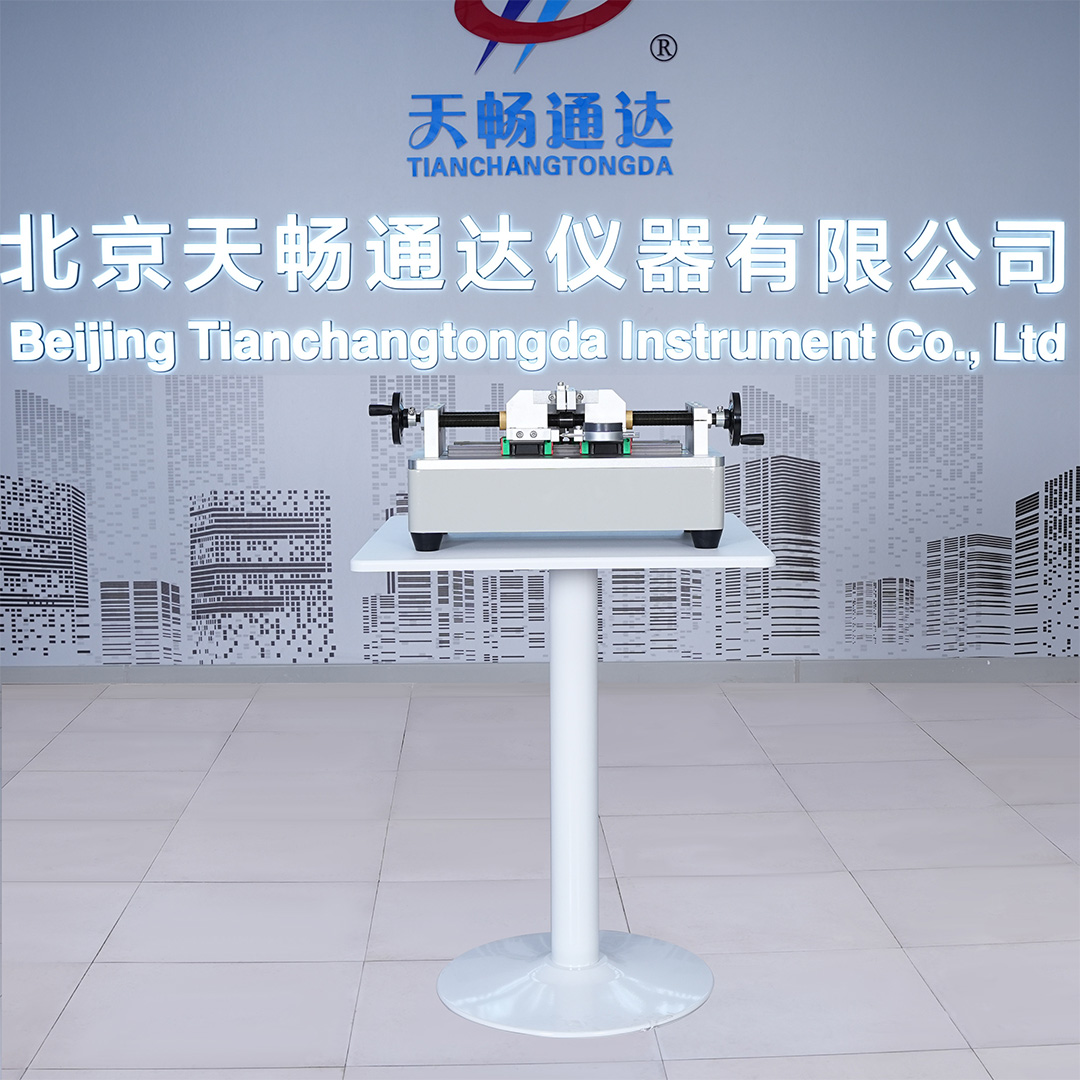Double gap prototype

PIC-(Double gap prototype)
1、 Product Introduction
The double gap prototype is a high-end and precise sample making equipment designed specifically for material science research, product development, and quality control. It can accurately create double notches on material samples to meet the needs of various mechanical performance tests. This device combines modern mechanical manufacturing technology, electronic technology, and computer technology to provide users with efficient, stable, and easy-to-use sample preparation solutions.
1. Appearance and structure
The double gap prototype has a simple and elegant appearance, and a compact and reasonable structure. The body is made of high-quality metal materials, ensuring the stability and durability of the equipment. The user-friendly design of the operation panel allows users to easily set and adjust sample preparation parameters.
1. Function
This equipment is mainly used to make double notches on material samples for subsequent mechanical performance testing, such as impact testing, tensile testing, etc. Through precise control systems, users can easily set the depth, width, and position of notches.
1. Characteristics and advantages
·High precision: Adopting advanced control systems and precise mechanical structures to ensure the accuracy of notch making.
·High efficiency: With a high degree of automation, it can quickly complete the preparation of multiple samples.
·Flexibility: Can adapt to samples of different materials and sizes.
·Usability: The user interface is user-friendly, and users only need simple training to get started with the operation.
1. Working principle
The double notch prototype uses a high-speed rotating tool to cut the desired notch on the sample. The speed, feed rate, and cutting depth of the cutting tool can be precisely adjusted through the control system. The equipment is also equipped with an advanced cooling system to ensure stable temperature of the cutting tools and samples during long-term operation.
1. Product composition
It mainly consists of a host, control system, tool system, cooling system, and sample clamping device. Each part is carefully designed to ensure the overall performance and stability of the equipment.
2、 Instrument technical parameters
Ø Blade cutting end angle: 14 ° ± 2 °
Ø Clamping width adjustment range: 4mm~15mm
Ø Tool thickness: 0.23mm ± 0.03mm
Ø Blade spacing: 4 ± 0.005mm adjustable
Ø Coplanarity of cutting tools: ≤ 0.01mm
Ø Blade: 2 pieces installed with the host
Electrical requirements: No power supply required
External dimensions: 480 * 230 * 250mm (length x width x height)
Net weight of the main engine: 17kg
3、 The instrument meets the standards
GB/T 32682-2016 (Ultra high molecular weight polyethylene pipes)
QB/T 2668.1-2017 (Ultra high molecular weight polyethylene pipes)
IS0:16770-2019 (Determination of Environmental Stress Fracture (ESC) of Plastic Polyethylene)
ASTM F1473 (Standard Test Method for Notch Tensile Test for Measuring Slow Crack Growth Resistance of Polyethylene Pipes and Resins)
4、 Application field
The double gap prototype is widely used in materials science, mechanical engineering, aerospace, automotive manufacturing and other fields. It can not only be used for sample preparation of common materials such as metal, plastic, rubber, but also for sample preparation of new materials such as composite materials and ceramics. This device plays an important role in product development, quality control, and material performance evaluation.
5、 Scope of application and limitations
1. Scope of application
·Suitable for sample preparation of various metal materials (such as steel, aluminum, copper, etc.) and non-metallic materials (such as plastic, rubber, composite materials, etc.).
·Suitable for samples of different sizes and shapes, simply replace the corresponding clamping device and tool.
·Suitable for situations where double notches need to be made for mechanical performance testing.
1. Limitations
·The hardness and toughness of the sample should be within the allowable range of the equipment to avoid excessive wear or damage to the cutting tools and equipment.
·For certain special materials (such as superhard materials or high-temperature materials), special cutting tools and cooling systems may be required to support the sample preparation work.
·Operators should receive professional training and strictly follow operating procedures to ensure the safe and stable operation of the equipment. At the same time, regular maintenance and upkeep should be carried out on the equipment to extend its service life and maintain stable performance.
6、 Safe operation and maintenance
Safe operation
1. Equipment preparation: Before using the double gap prototype, it is necessary to check whether the power supply, cables, sensors, and fixtures are intact and undamaged to ensure that the equipment is in good working condition.
2. Laboratory environment: Confirm that the electrical installation in the laboratory meets national standards, and the equipment should be placed in a ventilated, dry, and flat place to ensure stability.
3. Operating standards: Operators must carefully read the operating manual and strictly follow the requirements for operation. During the sample preparation process, hands or other body parts should be avoided from coming into contact with the cutting tool and sample to prevent safety accidents.
4. Load control: During the testing process, overloading is not allowed, and loading should be carried out in accordance with regulations, and parameters such as maximum load and displacement should be strictly controlled.
Maintenance and upkeep
1. Daily cleaning: After each use, equipment and accessories, especially tools and fixtures, should be cleaned to ensure the accuracy of subsequent experiments.
2. Equipment inspection: Regularly check if the connecting components of the equipment are loose, and if necessary, tighten them again to prevent equipment failure.
3. Electrical safety: Regularly inspect cables for wear or aging to ensure signal stability.
4. Regular maintenance: Follow the manufacturer's recommendations for regular maintenance and upkeep, such as adding lubricating oil, replacing worn parts, etc., to maintain the good operating condition of the equipment.
7、 Customer support and after-sales service
Professional double gap prototype suppliers usually provide comprehensive customer support and after-sales service. This includes but is not limited to equipment installation guidance, operation training, troubleshooting, and regular maintenance. Users can promptly contact the supplier for technical support if they encounter any problems during use.
8、 Summary
The double gap prototype, as a high-precision sampling equipment, plays an important role in material science research and industrial production. By understanding its appearance, structure, function, and characteristics, we can better utilize this tool to improve work efficiency and testing accuracy. At the same time, strict adherence to safety operating procedures and regular maintenance are also key to ensuring long-term stable operation of equipment.





















